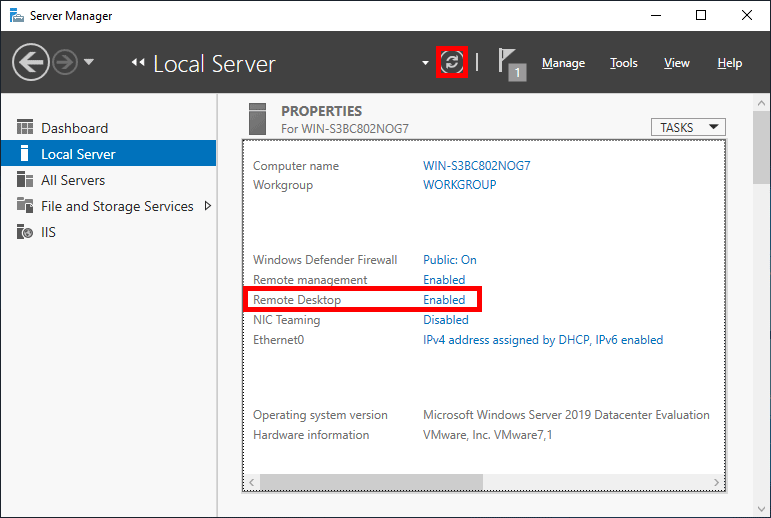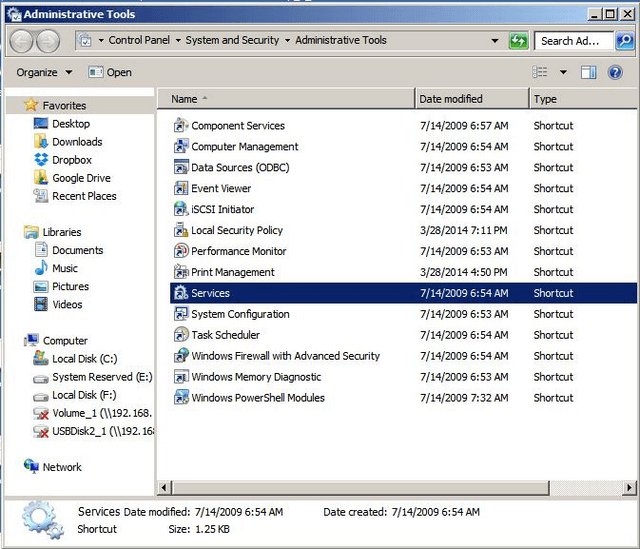Last updated on February 27th, 2020
- The Remote Desktop Services Service Could Not Be Stopped
- Remote Desktop Services Service
- Free Remote Desktop Services
This article contains step by step instructions on how to install and configure the Remote Desktop Services on a Windows Server 2016 or 2012. In Windows Server 2016 & 2012 the Terminal Services role has been replaced by the Remote Desktop Session Host (RDSH) role service and is part of Remote Desktop Services (RDS). A Remote Desktop Session Host (RDSH) server, provides to remote users the ability to access the applications on the RDS host server and the company resources from anywhere by using an RDP client.
Remote Desktop Services ¶ This document describes deployment via Remote Desktop Services, including RemoteApp and Terminal Server, (formerly Windows Terminal Server). Remote Desktop Services is another key component of Microsoft's virtualization strategy. While Hyper-V delivers server virtualization, Remote Desktop Services delivers presentation virtualization and virtual desktop infrastructure (VDI) technologies. Remote Desktop Services provides server-hosted access to Windows-based applications and desktops. Welcome to the Remote Desktop Licensing website. This secure site is designed to help you manage your license server for Windows Server 2012, Windows Server 2008 R2, Windows Server 2008, Windows Server 2003, or Windows 2000 Server, and for you to obtain Remote. Microsoft’s Remote Desktop Services is a popular desktop virtualization product. RDS provides users with a Windows client desktop that is shared among other users on Windows Server and allows administrators to provide a Windows desktop experience for many users at once, using one or more servers and a Remote Desktop Protocol client.
In this tutorial you 'll learn how to setup and configure a Windows Server 2016 or 2012 as a Remote Desktop Session Host (Terminal) server, in order to provide remote desktop sessions, based on the number of Remote Desktop Services client access licenses (RDS CALs) installed on the RDSH server.
How to Setup and Configure a Windows Server 2016/2012 as a Remote Desktop Session Host Server (Terminal Server).
Notes:
1. The mentioned steps below, can be applied either on a Domain Controller or in a standalone server 2016/2012.
2. If the Terminal services are installed on a server that will act as a Domain Controller also, then first install the Active Directory Domain Service (AD DS) role service and promote the Server to a Domain Controller, before installing the Remote Desktop Session Host (RDSH) role service (Terminal Service).
3. Keep in mind that the below configuration does provide access to RemoteApp programs or the RDWeb site, because the Remote Desktop Connection Broker role service will not be installed.
Step 1. Install Remote Desktop Services on Server 2016/2012.
Step 2. Activate the Remote Desktop License Server.
Step 3. Install Licenses on the Remote Desktop License Server.
Step 4. Configure RD Session Host role to use the local Remote Desktop Licensing server & Set the Remote Desktop licensing mode.
Step 5. Add RD Clients (Users) to the Remote Desktop Users Group.
Step 6. Allow the log on through remote desktop Services.
Step 1. Install Remote Desktop Licensing and Remote Desktop Session Host role services.
1. Open 'Server Manager' and click on Add Roles and Features.
2. At the first screen of 'Add Roles and Features wizard' leave the Role-based or feature-based installation option and click Next.
3. At the next screen, leave the default option 'Select server from the server pool' and click Next.
4. Select the Remote Desktop Services and click Next.
5. Leave the default settings and click Next at Features and Remote Desktop Services screens.
6. At Role Services screen, select the Remote Desktop Licensing role service and then click Add Features.
7. Then select the Remote Desktop Session Host role service and click Add Features again.
8. When done, click Next to continue.
9. Finally click Install to install the Remote Desktop Services: Remote Desktop Licensing and Remote Desktop Session Host.
10. When the installation is completed close the 'Add Roles and Features Wizard' and restart your server.
Step 2. Activate the Remote Desktop License Server.
1. Simultaneously press the Windows + R keys to open run command box.
2. Type licmgr.exe and press Enter to open the RD Licensing Manager *
* Note: Alternately, you can launch the RD Licensing Manager, from Control Panel –> Administrative Tools –> Remote Desktop Services –> Remote Desktop Licensing Manager.
3. At the right pane, right click on the server name and select Activate Server.
4. Click Next at the Welcome screen and then click Next again at Connection method options.
5. At 'Company Information' window, fill the required fields and click Next twice to activate your License Server.
6. When the activation is completed, leave checked the 'Start Install Licenses Wizard' checkbox and click Next.
7. Continue to next step.
Step 3. Install Licenses on the Remote Desktop License Server.
1. At 'Welcome to the install licenses wizard', click Next
2. On the License Program page, select the appropriate program through which you purchased your RDS CALs, and then click Next.
3. According the License Program you selected on the previous page, type either the license code or the agreement number provided when you purchased your RDS CALs and then click Next.
4. On the Product Version and License Type page, select the appropriate product version, license type, and the quantity of the RDS CALs based on your RDS CAL purchase agreement, and then click Next.
5. When the RDS CALs installed on the server, click Finish. *
TIP: If you cannot activate the RDS Server automatically, then try to activate it using the Web Browser or via Telephone. To do that:
a. Right-click on the Server's name and select Properties.
b. Change the Connection Method to Web Browser or to Telephone.When done, click OK.
c. Finally, right click on the server name, select Activate Server and follow the onscreen instructions to completed the activation.
Step 4. Configure RD Session Host role to use the local Remote Desktop Licensing server & Set the Remote Desktop licensing mode.
1. Open Group Policy Editor. To do that:
1. Simultaneously press the Windows + R keys to open run command box.
2. Type gpedit.msc and press Enter.

2. In Group Policy Editor navigate to:
- Computer ConfigurationAdministrative TemplatesWindows ComponentsRemote Desktop ServicesRemote Desktop Session Host Licensing
3. At the right pane, double click at Use the specified Remote License Servers.
4. Click Enabled, and then at 'License server to use' field, type the RDS license server name and click OK.
5. Then open the Set the Remote Desktop licensing mode setting.
6. Click Enabled and then specify the licensing mode (Per User or Per Device) for the RDS host server and then click OK again.
7.Close Group Policy Editor.
8. Verify the RD Licensing configuration, by going to: Windows Control Panel –> Administrative Tools –> Remote Desktop Services –> RD Licensing Diagnoser.
Step 5. Add RD Clients (Users) to the Remote Desktop Users Group.
1. Open Server Manager.
2. From Tools menu, select Active Directory Users and Computers. *
* Note: If the RD Session Host Service is not installed on the Domain Controller, use the 'Local Users and Groups' snap-in or the 'Remote' tab in the 'System Properties' on the RDS host server, to add the remote desktop users.
3. Double click at your domain on the left and then select Builtin.
4. Open Remote Desktop Users on the right pane.
5. At Members tab, click Add.
6. Type the name(s) of the users that you want to give Remote access to the RDS Server and click OK.
7. After selecting the remote desktop users, click OK again to close the window.

8. Continue to step-6 below.
Step 6. Allow the log on through remote desktop Services.
1. Open the Local Group Policy Editor. To do that:
1. Simultaneously press the Windows + R keys to open run command box.
2. Type gpedit.msc and press Enter.
2. In Group Policy Editor navigate to: Computer Configuration > Windows Settings > Security Settings > Local Policies > User Rights Assignment.
3. At the right Pane: double click at Allow log on through Remote Desktop Services.
4. Click Add User or Group.
5. Click Object Types, check all the available objects (Users, Groups, & Built-in security principals) and then click OK.
6. Type remote desktop users and then click OK.
7. Finally click OK again and close Group Policy Editor.

8. Now you 're ready to connect to the Remote Desktop Session Host Server 2016/2012 from any Remote desktop client.
That’s it! Let me know if this guide has helped you by leaving your comment about your experience. Please like and share this guide to help others.
We're hiring
We're looking for part-time or full-time technical writers to join our team! It's about a remote position that qualified tech writers from anywhere in the world can apply. Click here for more details.
The Remote Desktop Services Service Could Not Be Stopped
Full household PC Protection - Protect up to 3 PCs with NEW Malwarebytes Anti-Malware Premium!
Microsoft’s Remote Desktop Services is a popular desktop virtualization product. RDS provides users with a Windows client desktop that is shared among other users on Windows Server and allows administrators to provide a Windows desktop experience for many users at once, using one or more servers and a Remote Desktop Protocol client.
As such, RDS is a valuable and widely available tool for operations continuity, empowering workers with the capabilities to function both in the office and away from it.

With two servers, administrators can set up an entire RDS implementation in only four steps.
1. Install RDS Base Roles
A typical RDS implementation has five roles: Remote Desktop Connection Broker, Remote Desktop Web Access, Remote Desktop Session Host, Remote Desktop Licensing and Remote Desktop Gateway.
Think of the RD Connection Broker, RD Web Access and the RD Session Host roles as base roles, which need to be installed on the primary RDS server.
Within the Add Roles and Features wizard, select Remote Desktop Services installation using the Quick Start option on Windows Server. The RDS wizard will then serve as a guide to installing all of these roles at once.
2. Install the Licensing Server
From within the Server Manager application, add a server to manage what will become a licensing server. Navigate to Remote Desktop Services and click on the green plus sign for RD Licensing. From there, add the other server on the Add RD Licensing Servers screen.
Once Windows installs the licensing server, a green plus sign should be visible above RD Licensing in the RDS Deployment Overview section.
3. Add RD Gateway Role
On the Remote Desktop Services screen, click on the green plus sign over RD Gateway, then select the destination server. When prompted, name the self-signed SSL certificate with a fully qualified domain and click Next to add the role.
4. Configure Deployment Properties
Once all roles are installed, navigate to the Remote Desktop Services screen, click on Tasks, then click on Edit Deployment Properties. On this screen, click on RD Licensing, choose Per User or Per Device settings depending on your agency’s needs and click OK. These settings will provide a basic RDS setup.
Adobe Audition CC 2019 Features: Improvement on the DeReverb and DeNoise effects Performance update, it now able to play 128 audio tracks smoothly Add audio. Download the full version of Adobe Audition for free. Mix, edit, and create audio content with a comprehensive toolset that includes multitrack, waveform, and spectral display. Start your free trial today. Download Adobe Audition CC 2019 Full Version Terbaru. Free Download Adobe Audition CC 2019 Full Crack Final – Adobe Audition biasa digunakan untuk melakukan editing audio pada windows 10 pc dan mac.Audition for pc sudah banyak digunakan oleh para professional editor terutama karena aplikasi audio ini terintergrasi ke sesama aplikasi adobe. Download Adobe Audition 2019 v12.1.3.10 With Crack – Hello, welcome back to the site encrack.com, as usual to re-post this time about Download Adobe Audition 2019 v12.1.3.10 With Crack with keygen, Adobe Audition Crack software is a powerful and professional audio editor is actually a digital audio workstation (Digital Audio Workstation) is. 
Remote Desktop Services Service
More On
Free Remote Desktop Services
Related Articles
